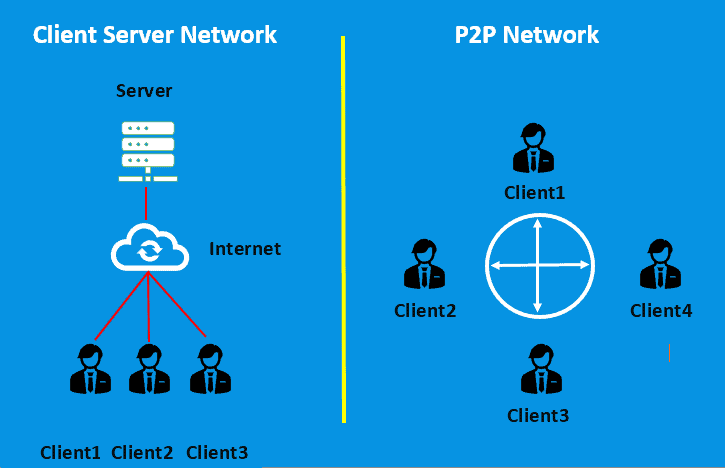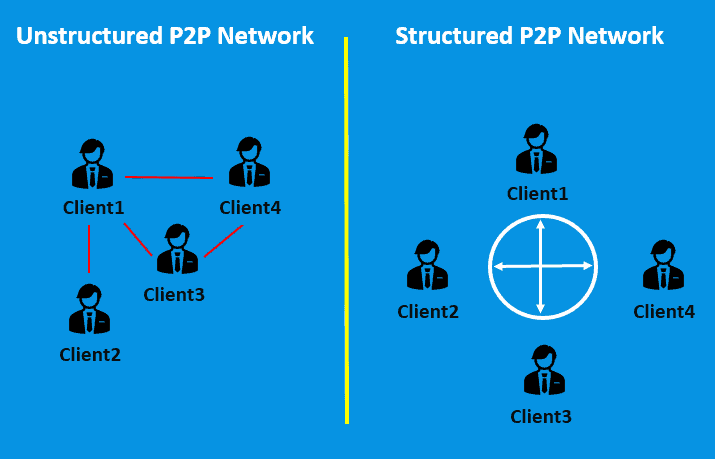1. Introduction
Recently, the peer-to-peer (P2P) network model has gained immense popularity as a network architecture, especially with the advent of decentralized systems.
Decentralized systems, such as blockchain, provide a more secure and transparent alternative to centralized systems by enabling P2P transactions and removing the need for a central authority. This trend contributes to the growing use of P2P networks in the technology industry.
In addition, P2P allows nodes to request and provide services, thereby enhancing network flexibility and reducing reliance on central points of failure.
In this tutorial, we’ll cover the fundamentals of the P2P model, its features, pros, cons, and diverse applications.
2. P2P Model: Overview
P2P is a network model where multiple computers or devices communicate directly without the need for a centralized server.
In a P2P network, each device is a client and a server. Additionally, it can both request and provide resources or services to other devices in the network.
One of the key advantages of P2P networks is their decentralized nature, which makes them more flexible to failures and censorship. In addition, P2P networks can continue their functions even in the face of adversity. That’s because no central server can be shut down or targeted by hackers or governments.
2.1. Difference Between P2P and Client Server Models
P2P and client-server models are two common network models. However, some key differences between them impact how they are used and what kinds of applications they are best suited for.
The following table summarizes the key differences between the P2P and client-server network models:
Criteria
P2P Model
Client-Server Model
Resource Sharing
Nodes share resources such as storage, processing power, and bandwidth
Central server controls resources and data
Scalability
Network can easily scale up to accommodate more nodes
Network may require more resources to handle traffic
Flexibility
Nodes can join and leave the network dynamically
Server controls client connections and resource access
Security
More difficult to secure due to lack of centralized control
Easier to secure and manage with centralized control
Speed
Slower to respond to requests since each node processes its requests
Faster to respond to requests with centralized control
Flexibility
More flexible and cost-effective due to resource sharing
Creates a single point of failure
Below is a visual representation of both the P2P and client-server network models:

2.2. Types of P2P Model
There are two main types of P2P models: structured and unstructured P2P networks. The following table illustrates the differences between them:
Criteria
Structured P2P
Unstructured P2P
Routing and searching
Efficient routing and searching of data within the network
Routing and searching can be more difficult
Complexity
More complex due to the organization and structure of nodes
Simpler to implement
Pros
Enables efficient routing and searching of data within the network
Simpler and more flexible to set up and implement
Cons
Can be more difficult to implement and manage
Routing and searching can be more difficult due to lack of structure
Below is a visual representation of both the unstructured and structured P2P networks:

3. Pros and Cons of the P2P Model
The P2P model has its pros and cons compared to traditional client-server networks. Hence, the following table summarizes the pros and cons of the P2P model:
Pros
Cons
Nodes can join or leave the network dynamically, and the network will automatically reorganize itself to maintain connectivity
Can produce a lower quality of service compared to client-server networks due to resource sharing
Can easily accommodate a large number of nodes without requiring additional hardware or infrastructure
Requires additional network overhead to maintain connectivity and ensure data consistency
Nodes can share resources such as bandwidth, storage, and processing power, making the network more efficient and cost-effective
Can be more complex to implement and manage compared to client-server networks
4. Applications of the P2P Model
We can use the P2P model in various applications, such as file sharing, instant messaging, online gaming, and blockchain technology.
P2P networks allow users to share files directly with each other without the need for a central server.
Besides, P2P networks allow users to communicate directly with each other without the need for a central server to route messages.
Furthermore, we can utilize the P2P network in online gaming because it allows players to connect directly without needing a central server to manage the game.
The P2P model is used in the blockchain, where nodes work together to keep the ledger updated and secure. This helps to create a decentralized network that is resistant to censorship.
5. Conclusion
In conclusion, the peer-to-peer (P2P) model has become increasingly popular, especially with the rise of decentralized systems like blockchain.
To decide if the P2P model is right for their needs, organizations should understand its features, types, pros, and cons.